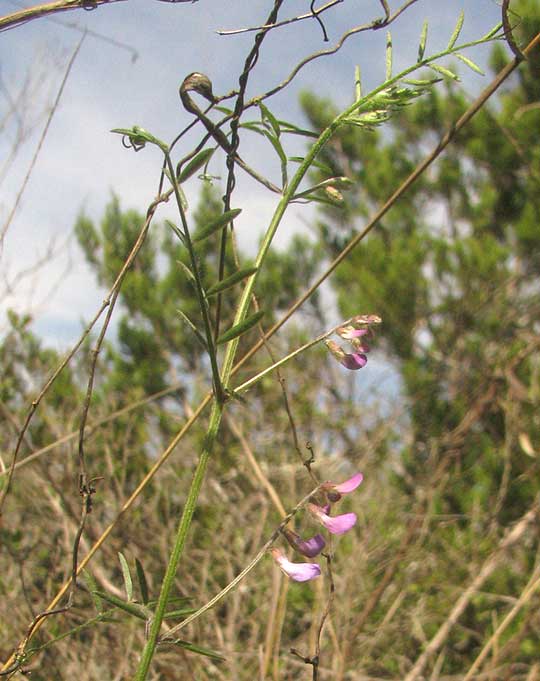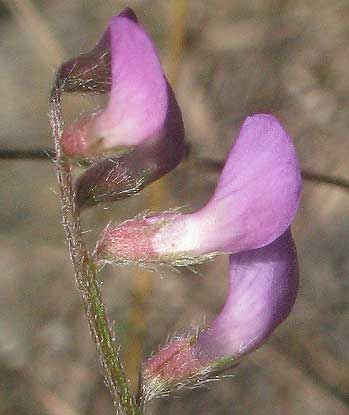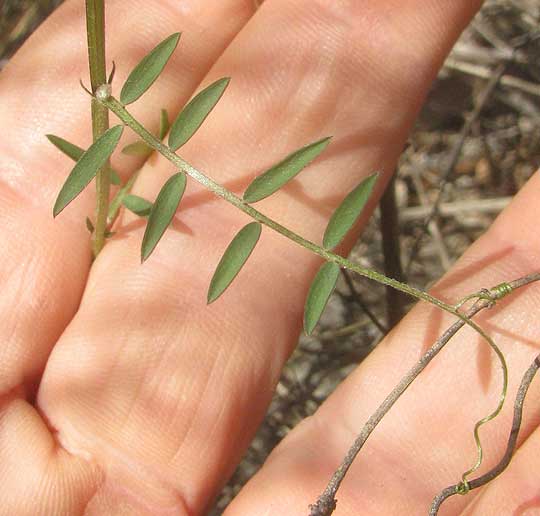Excerpts from Jim Conrad's
Naturalist Newsletter
from the March 23, 2014 Newsletter issued from the Frio Canyon Nature Education Center in the valley of the Dry Frio River in northern Uvalde County, southwestern Texas, on the southern border of the Edwards Plateau; elevation ~1750m (~5750 ft); N29.62°, W99.86°; USA
DEER-PEA VETCH
Sometimes on the very thin, quickly drying soil formed atop bedrock capping hills, in an environment that's so windswept and sun-baked that trees are unable to grow, or are very stunted, you get grassy "balds" or open areas where interesting plants might show up -- plants uniquely adapted for such extreme environments. Looking for such hilltop specialists I came upon a slender, herbaceous vine whose few small, rosy-colored blossoms were easy to see surrounded by such wintry, droughty brown-grayness. Below, you can see the vine climbing a weed stem as it issues leaves and flowers:

The flowers' corollas, only about 3/16ths inch long (5mm) are typical of the Bean Family -- they're "papilionaceous," with a big top petal forming a bonnet-like "standard," two side petals called "wings," and two lower petals fused to form a scoop-shaped "keel," as shown below.

The modest, slender, pinnately compound leaves also are typical of the Bean Family. Below, you can see that the compound-leaf, which has unusually slender leaflets,has a tip bearing two tendrils that wrap around things and hold the vine in place as the plant climbs higher:

A Bean Family member with tendrils tipping a wildflower's pinnately compound leaf cues many wildflower sniffers to the fact that we have a species of vetch, genus Vicia. However, about 140 vetch species are known worldwide, with over 30 in North America, so which one is this?
Our hilltop species is so relatively small, with so few flowers per raceme, and with such hairy vegetative parts that it keys out quickly to what's variously called Deer-pea Vetch or Louisiana Vetch. It's VICIA LUDOVICIANA, in the US occurring mostly in the arid southwestern states, though appearing spottily here and there beyond. It also occurs widely in the northern half of Mexico.
Therefore, though I was looking for a rare species in this severe habitat, I got one of moderate-size distribution and one that's fairly commonly occurring. However, Deer-pea Vetch is described as living in grassy, brushy or wooded slopes, so it was at home atop our hill. On the hill you wouldn't have found the similar but more robust, weedy vetch species that down in the valley wrap themselves in fences and occupy lush pastures.